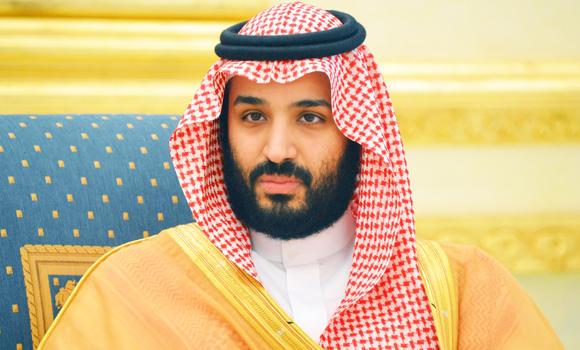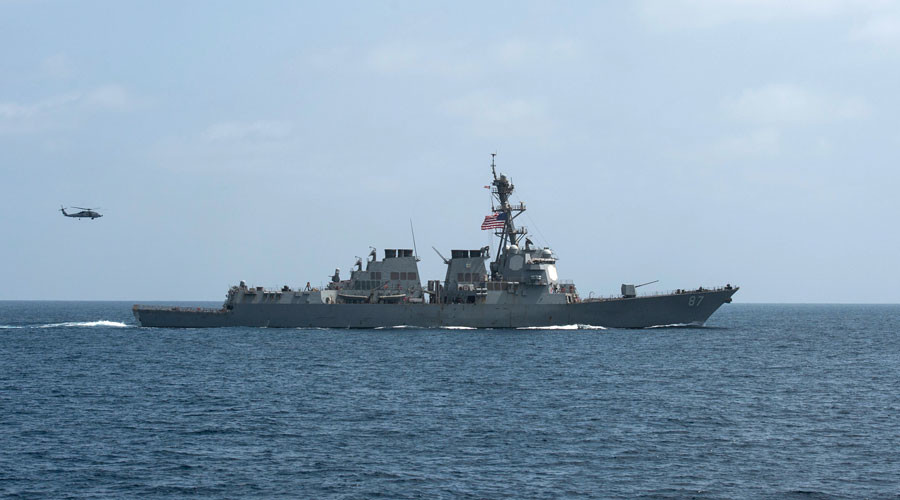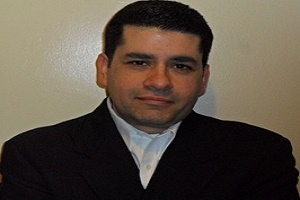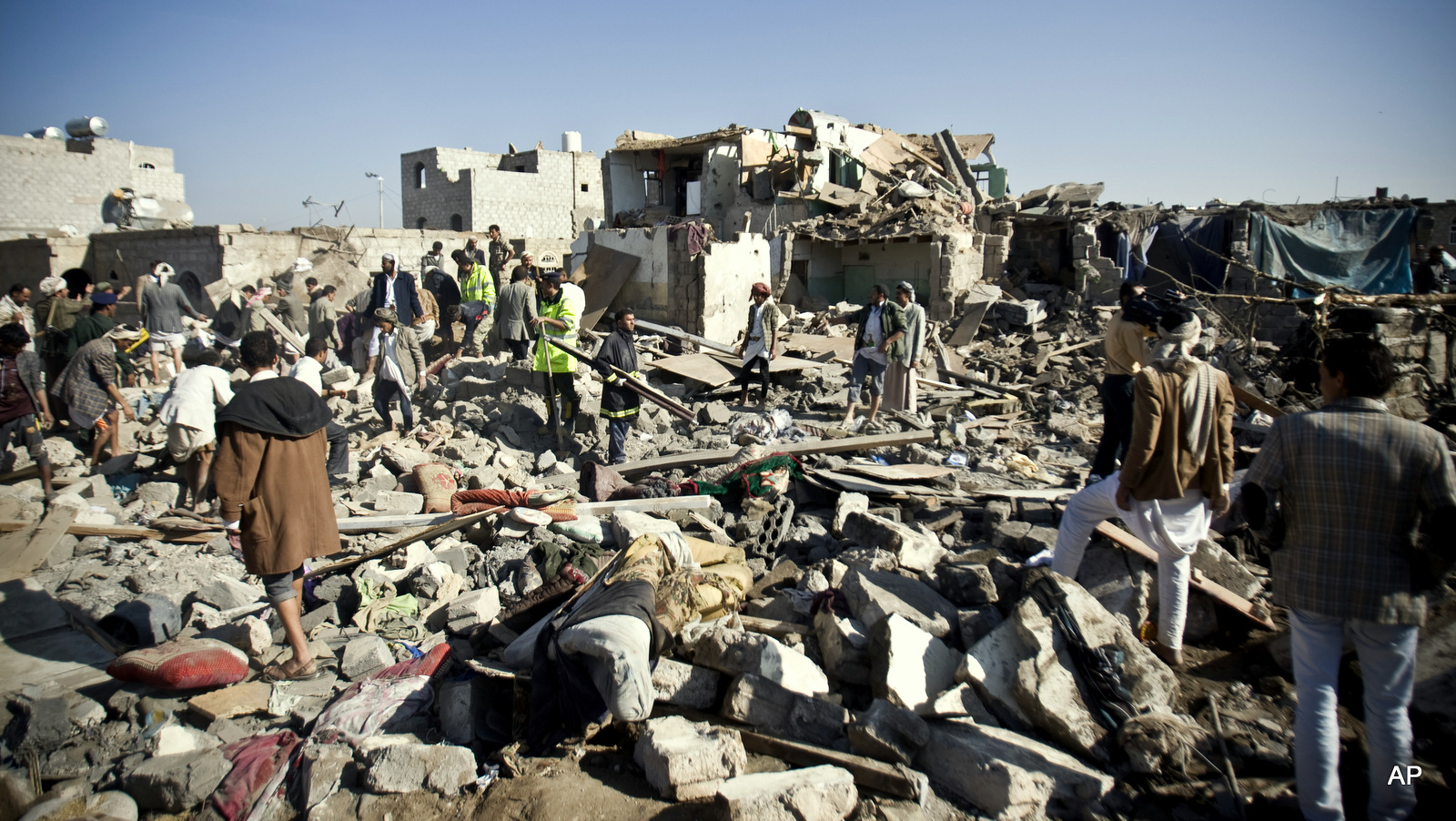Trump, Saudi Arabia and the War on Yemen
On April 2nd, The Yemen News Agency (SABA) reported that US-Saudi war planes struck several targets including private and public properties across several provinces in Yemen:
The US-Saudi aggression war planes continued heinous strikes against citizens, causing heavy damage to private and public properties in several provinces over the past hours, a military official told Saba on Sunday. The warplanes waged 12 strikes on Haradh district of Hajja province and three other strikes on Serwah district of Mareb province, as well waged six raids on Kamaran island in Hodeida province
Saudi Arabia’s war on Yemen has created a humanitarian crisis within the poorest country in the Middle East. However, Trump is seeking an even closer relationship with the Saudi Monarchy. The Saudi Monarchy is an important part of Washington’s goal of dominating the Middle East for its natural resources, one that benefits its corporations that range from arms manufacturers to big oil companies. One other important factor to consider is Israel’s security which plays an important part of U.S. foreign policy in the region. Saudi Arabia is a vassal state, one that has a long history of supporting terrorists such as the Islamic state, al-Qaeda and others who have wretched havoc across the Arab world killing innocent men, women and children. Saudi Arabia is also one of the worst human rights violators in the world especially against women.

They are agents of chaos, or one might call “useful idiots” to counter Arab governments and resistance movements (Yemen, Syria, Iran, the Palestinians and Hezbollah) not aligned with U.S. and Israeli interests. So, as expected, US President Donald Trump hosted Saudi Arabia’s Deputy Crown Prince Mohammed bin Salman last month at the White House to discuss economics and Iran’s influence in the Middle East. According to Reuters:
Saudi Arabia hailed a “historical turning point” in U.S.-Saudi relations after a meeting between U.S. President Donald Trump and Deputy Crown Prince Mohammed bin Salman highlighted the two leaders’ shared view that Iran posed a regional security threat
During a speech at the American-Israel Public Affairs Committee (AIPAC) in 2016, Trump mentioned that Iran is a major problem for U.S. allies including Saudi Arabia,
“Iran is a problem in Iraq, a problem in Syria, a problem in Lebanon, a problem in Yemen and will be a very, very major problem for Saudi Arabia.”
A senior advisor to Prince Mohammed said that
“This meeting is considered a historical turning point in relations between both countries and which had passed through a period of divergence of views on many issues.”
A historical turning point according to Mohammed’s advisor is to “form a big change in relations between both countries in political, military, security and economic issues,” What is troublesome about the meeting is that Saudi Arabia and other Gulf States see Trump as a strong leader who will contain Iran’s influence in the region.
Both the Trump administration and the Saudi Monarchy find common ground on Iran’s Nuclear Deal which they both view as dangerous. Both also share the same concerns on “the danger of Iran’s regional expansionist activities.” Although the Obama administration sold arms to Saudi Arabia in the past, Obama suspended the sale of arms including U.S.-made precision-guidance munitions to the Saudi Monarchy last December due to “concerns over widespread civilian casualties” according to a Reuter’s article published in 2016. The Trump administration is considering an arms deal to the Saudis that the State Department has already approved, but the White House has not yet confirmed the deal.
Targeting Yemen to Fight “Iranian Influence”?
The Agence France-Presse (AFP) headlined ‘Trump meets top Saudi prince as Yemen war rages’ said
“Saudi Arabia is likely to welcome Trump’s harder line on its arch-rival Iran and there is likely to be less friction over Riyadh’s war against Iranian-backed Houthi rebels in Yemen.”
However, The Huffington Post reported in 2015 that Obama admitted that Iran “tried to stop” the Houthi rebels from advancing on Sanaa in a report titled ‘Iran Tried To Stop Houthi Rebels In Yemen, Obama Says’:
Iran tried to hold back Shia rebels who were intent on taking the Yemeni capital of Sanaa at the height of the uprising in 2014, President Barack Obama told a group of reporters Wednesday afternoon. The Houthi rebels, however, ignored the advice and marched on, precipitating a much wider war in Yemen. Obama’s observation confirms an earlier Huffington Post report that, contrary to widespread assumptions in the United States, Iran was not the driving force of the crisis in Yemen
In Obama’s own words according to The Huffington Post report:
“We watched as this proceeded. There were moments where Iran was actually urging potential restraint,” he said. ”Now, once the Houthis march in and there’s no there there” — in other words, the government completely collapsed and Houthis expecting resistance found none at all —“are they interested in getting arms to the Houthis and causing problems for the Saudis? Yes. But they weren’t proceeding on the basis of, come hell or high water, we’re moving on a holy war here.”
Despite its malevolent intentions and motivation, displays such this one suggested to him that, in the end, Iran is rational and can be dealt with, Obama said. “It’s on that basis that we entered into the interim agreement,” he said
Wikileaks obtained documents (https://wikileaks.org/plusd/cables/09SANAA2186_a.html) that was published on December 9th, 2009 titled ‘Who Are The Houthis, Part Two: How Are They Fighting?’ detailed where the Houthi rebels obtained their weapons according to various political analysts, a British diplomat and NSB Director Ali Mohammed al-Ansi:
12. (S/NF) contrary to ROYG claims that Iran is arming the Houthis, most local political analysts report that the Houthis obtain their weapons from the Yemeni black market and even from the ROYG military itself. According to a British diplomat, there are numerous credible reports that ROYG military commanders were selling weapons to the Houthis in the run-up to the Sixth War. An ICG report on the Sa’ada conflict from May 2009 quoted NSB director Ali Mohammed al-Ansi saying, “Iranians are not arming the Houthis. The weapons they use are Yemeni. Most actually come from fighters who fought against the socialists during the 1994 war and then sold them.” Mohammed Azzan, presidential advisor for Sa’ada affairs, told PolOff on August 16 that the Houthis easily obtain weapons inside Yemen, either from battlefield captures or by buying them from corrupt military commanders and soldiers. Azzan said that the military “covers up its failure” by saying the weapons come from Iran. According to Jamal Abdullah al-Shami of the Democracy School, there is little external oversight of the military’s large and increasing budget, so it is easy for members of the military to illegally sell weapons.
13. (S/NF) ROYG officials assert that the Houthis’ possession and use of Katyusha rockets is evidence of support from Iran and Hizballah, arguing that these rockets are not available in Yemeni arms markets nor ROYG stockpiles. (Comment: Given Yemen’s robust arms markets, especially in Sa’ada, it is possible that Katyushas are available on the black market even if they are not in ROYG stockpiles. According to sensitive reporting, there is at least one instance of Somali extremists purchasing Katyusha rockets in Yemen in 2007. End Comment.) However, according to sensitive reporting, it may have been the ROYG military who aided the Houthis in obtaining a shipment of 200 Katyusha rockets in late November 2009
Trump’s accusations that Iran is supporting the Houthi rebellion are baseless. An important note to consider is that Iran is mentioned in the Project for the New American Century (PNAC) report which was produced in 2000 by the Neoconservatives during the George W. Bush Administration. The PNAC report said that “retaining forward-based forces in the region” is essential for U.S. security interests concerning Iran:
Over the long term, Iran may well prove as large a threat to U.S. interests in the Gulf as Iraq has. And even should U.S.-Iranian relations improve, retaining forward-based forces in the region would still be an essential element in U.S. security strategy given the longstanding American interests in the region
 Iran’s threat to Washington is that it has an enormous amount of oil and other natural resources. Iran is a sovereign nation that is aligned with the Axis of Resistance within the Middle East namely Syria, Lebanon, Hezbollah and the Palestinians. Iran is also aligned with Washington’s long-time adversaries, Russia and China. The PNAC report specifically states Washington’s long-term goal and that is to dominate the Middle East by isolating Iran with U.S. military bases close to their borders ready to attack on a moment’s notice.
Iran’s threat to Washington is that it has an enormous amount of oil and other natural resources. Iran is a sovereign nation that is aligned with the Axis of Resistance within the Middle East namely Syria, Lebanon, Hezbollah and the Palestinians. Iran is also aligned with Washington’s long-time adversaries, Russia and China. The PNAC report specifically states Washington’s long-term goal and that is to dominate the Middle East by isolating Iran with U.S. military bases close to their borders ready to attack on a moment’s notice.
Trump is doing what every administration has done in the past whether Democrat or Republican and that is to support Iran’s long-time adversaries, Saudi Arabia and Israel and isolate Iran that will allow the U.S. to dominate the resource-rich region. The U.S. and its allies have been preparing for a possible war against Iran since the 1979 Iranian revolution that overthrew the U.S. puppet government of Mohammad Reza Pahlavi also known as the Shah of Iran. However, a war scenario is unlikely to play out any time soon since it would lead to a wider war in the Middle East with the Axis of Resistance including Russia and China, a costly war one might add.
Trump wants to Fight ISIS with one of the Main Sponsors of Terror, Saudi Arabia
Regardless of their human rights abuses and their spread of Wahhabi terrorism, the Trump administration will seek closer ties with Saudi Arabia. The Trump Administration is expected to approve the new arms deal to Saudi Arabia to continue its bombardment of Yemen. The Independent, an online news source based in London reported that the State department will continue selling arms to the Saudis. The report ‘Donald Trump’s State Department approves Saudi Arabia weapons sales blocked by Barack Obama’ said the following:
The State Department has approved resuming arms sales to Saudi Arabia previously blocked by Barack Obama. A multi-million dollar technology for Riyadh was blocked by the former President during the final months of his administration over human rights concerns
For Trump, Iran is a major threat in the Middle East, not the dictatorship of the Saudi monarchy that has continuously bombed Yemen causing a humanitarian crisis with more 10,000 civilian casualties and counting. Trump’s policy towards “Islamic militants” in the Middle East is “aggressive” according to an article by www.stripes.com, an online U.S. military news site titled ‘Trump’s ramped up bombing in Yemen signals more aggressive use of military’:
More broadly, the expanded bombing in Yemen signals a more aggressive use of military force by the Trump administration against Islamist militants, from Syria to Afghanistan. The White House already has approved the deployment of Marines and special operations forces to Syria and a large-scale commando raid in Yemen, and on Thursday a top commander suggested more troops are headed to Afghanistan.
President Trump’s readiness to order military action stands in contrast to the previous administration. When Obama’s national security advisor Susan Rice ran the policy making process, “stuff moved like molasses through the National Security Council,” much to the frustration of military planners at U.S. Central Command, a former senior defense official, who spoke on condition of anonymity, told FP. The inter-agency discussions allowed plans to languish for weeks while debates swirled over when and how to act.
Throughout 2016, the Pentagon continually briefed the White House on ways to get more aggressive with al Qaida in the Arabian Peninsula, or AQAP, as they watched the group gain strength in their Yemeni strongholds. Those strikes didn’t happen, “but just because the clock ran out,” the official said.
The Obama administration handed over plans for a stepped-up campaign to the incoming Trump team in January, and there has been an immediate change in the tempo of operations, reflecting the new administration’s apparent preference for prompt military action over policy deliberations, and a more dominant role for the military in decision-making
The Yemeni Civil War that began in 2015 between the Houthi forces who are loyal supporters of Ali Abdullah Saleh and government forces allied with the Washington-backed Abd Rabbuh Mansur Hadi who was based in the Aden and is aligned with Al-Qaeda in the Arabian Peninsula (AQAP) and the Islamic State terrorists. On February 21st, 2012, Abd Rabbuh Mansur Hadi who was the Vice-President under Saleh held a presidential election. The problem was that Hadi was the only candidate in the elections who became Yemen’s president for two years. Washington and Saudi Arabia saw Hadi as the legitimate leader of Yemen despite the fact that he was the only candidate. As for the Houthi forces (who are Shia-led movement from Sa’dah, northern Yemen) began an insurgency against the Hadi government. By January of 2015 Hadi fled to Saudi Arabia and asked the Saudi Monarchy to help counter the Houthi insurgency. On March 26th 2015, the Saudi Kingdom launched operation ‘al-Hazm Storm’ with mainly U.S. puppet states of Bahrain, Egypt, Kuwait, Morocco, Pakistan, Qatar, Sudan and the UAE and collaborating with Somalia that allowed the coalition to use its military bases to invade Yemen. The cause of the Houthi led insurgency was the fact that the Hadi government did not follow-up on their power-sharing proposals that turned Yemen into a dictatorship backed by Washington. Since the war began, the United Nations says that 17 million people in Yemen are facing food shortages and close to 7 million people will become victims of a famine crisis.
Washington and its Close Ties to Saudi Oil
Washington has a long history with Saudi Arabia. Saudi Arabia was founded in 1901 by King Abdulaziz Al Saud, Bin Saud had a close relationship with the United Kingdom who was the first nation in the world to recognize Saudi Arabia as an independent nation. The British defended Saudi Arabia from the Turkish Empire who sought to expand its territories. Bin Saud also developed a close relationship with the United States. By May 1931, Washington recognized Saudi Arabia by granting it “diplomatic recognition.” During that time, Standard Oil based in California was granted concessions for oil exploration in the Eastern Province area called al-Hasa. By November 1931, a treaty was signed by both the US and Saudi Arabia that included a “favored nation status” within the treaty. By 1933, the California Arabian Oil Company (CASOC) which later became the Arab American Company (ARAMCO) began oil exploration throughout the Saudi kingdom until they got to Dhahran which produced a small amount of oil at the time (42.5 million barrels) between 1941 and 1945. Today, Saudi Arabia is one of the top oil exporters in the world with the U.S. being a major beneficiary.
Trump will build a closer relationship with Saudi Arabia despite the fact that is committing war crimes against Yemen and has supported terrorist organizations committed to overthrowing the Syrian government. Trump has repeatedly claimed that he wants to defeat the Islamic State, but Saudi Arabia is not a good partner to take on the terrorists because historically speaking, they have armed and supported terrorist organizations for a long time.
Washington and Saudi Arabia is a strategic alliance. Besides, Washington does like a good dictatorship that follows its marching orders, after all, the Saudis do have an abundance of oil that feeds the Military-Industrial Complex and provides enormous profits for U.S. oil companies. The Saudis long-time support of terrorism also advances Washington’s agenda to create wars and regime change in the Middle East. Washington has a vested interest in Saudi Arabia and that is why Trump will keep the alliance between the U.S. and Saudi Arabia intact, a move that advances Washington’s agenda and that is something that the establishment (or the swamp) would not disagree with.


